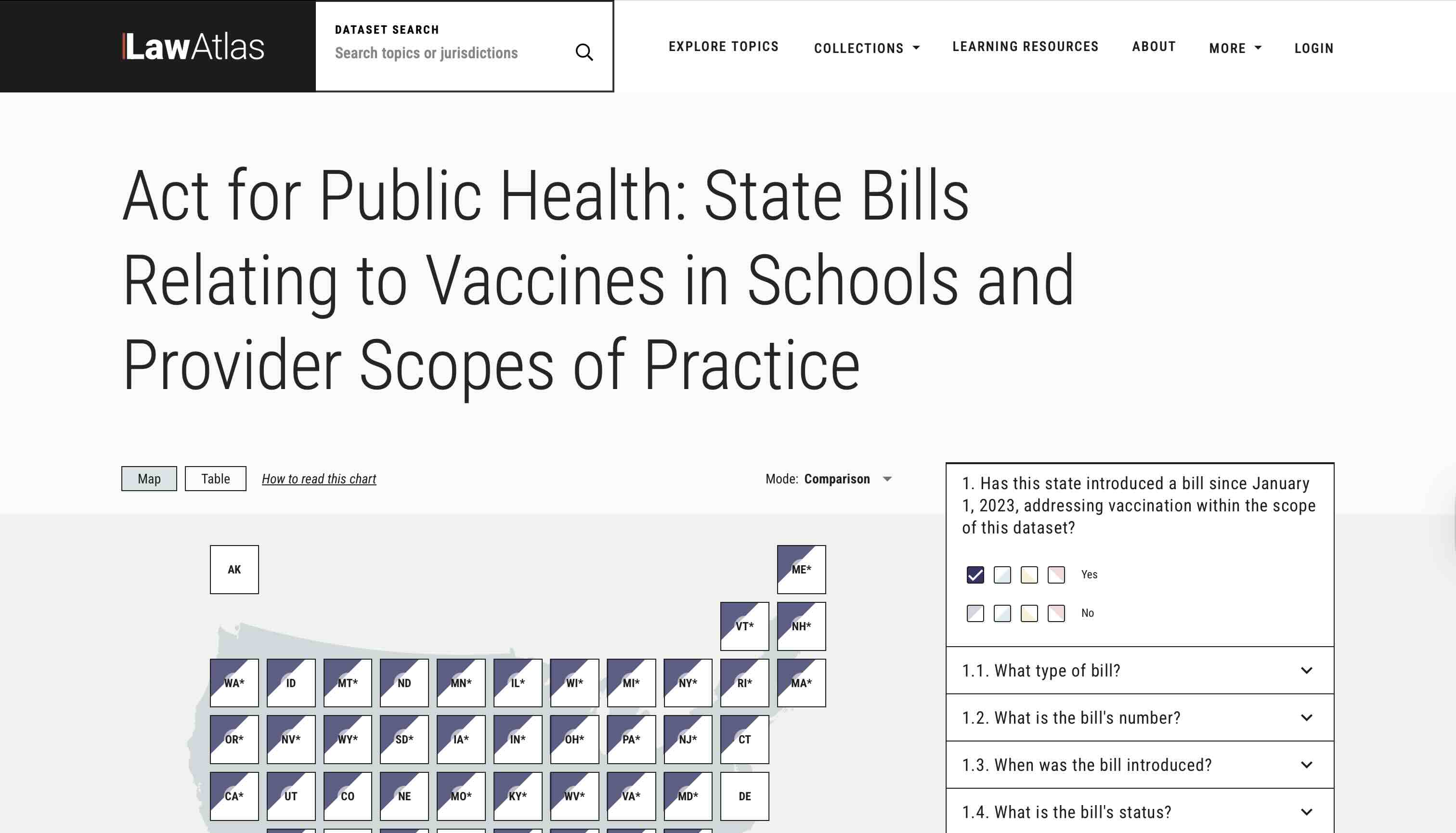Schools and School Districts
Schools, whether physical or virtual, are structured institutional settings that educate students and, ideally, prioritize student and staff health and well-being. Schools play a vital role in fostering academic, physical, and social development, and play a big part in creating safe and healthy environments for children. This involves implementing evidence-based strategies, collaborating with stakeholders, and addressing the diverse needs of the school community. Specific considerations for school practices and policies vary across educational levels, settings, local policies, and stakeholder involvement.
School districts are administrative units responsible for overseeing multiple schools within a specific geographic area. They play a crucial role in coordinating and implementing not only educational programming, but also health-promoting strategies, policies, and services across schools. School districts typically include a centralized governance structure, comprising administrators, district-level staff, and sometimes elected board members. However, the organization and authority of school districts may vary across regions, and caveats can exist in terms of the jurisdictional structure and level of autonomy granted to individual schools within the district.
While the primary goal of schools is to educate students, they also wield a substantial influence on the health and well-being of students, families, and the broader community, making their role and significance twofold. Schools are essential for promoting health, addressing health disparities, and fostering community engagement. For instance, school lunch programs significantly impact healthy food access, while school-based health care clinics provide accessible medical services. Additionally, emerging efforts, such as integrating mental health providers into school settings, are showing promising evidence of enhancing student well-being. Schools and school districts touch so many community members—whether students, parents, neighbors, etc.—understanding and actively engaging with schools and school districts can contribute to improved community health outcomes, health equity, and positive community change. Nationally, the collective well-being of the population is intricately intertwined with the quality of education and the comprehensive health promotion efforts fostered within school settings. Equitable access to resources within school districts further enhances the interplay between education and the overall health and well-being of individuals and communities.
Historical events have influenced the current situation for schools and school districts:
Public Health Movements: The late 19th and early 20th centuries witnessed public health movements focused on improving community health and hygiene. Concerns about infectious diseases and the need for preventive measures led to the establishment of school health programs and the integration of public health practices within schools.
Education Reforms: Education reforms throughout the 20th century aimed to improve access to education, quality of instruction, and equitable opportunities for all students. These reforms led to the establishment of school districts as administrative units responsible for overseeing educational systems, ensuring compliance with standards, and implementing policies related to health and well-being.
Civil Rights Movement: The civil rights movement in the mid-20th century brought attention to educational inequalities and discrimination. Efforts to promote desegregation and equal access to education further shaped the landscape of schools and school districts, aiming to address disparities and promote equity.
Global Health Concerns: Global health events and challenges, such as the HIV/AIDS pandemic, emergence of new infectious diseases, and the ongoing COVID-19 pandemic, have significantly impacted schools and school districts. These events have necessitated the development of public health strategies, policies, and interventions to mitigate disease transmission and ensure the well-being of students and staff.
Most children in the U.S. are influenced by schools and school districts, given the structure of the national public education system. However, it's essential to acknowledge that throughout history, marginalized populations, including low-income communities, racial and ethnic minorities, individuals with disabilities, and those grappling with systemic inequalities, have borne a disproportionate burden of poor educational and health outcomes within schools and school districts. This inequity is often rooted in historical disparities in educational funding, where Black and/or poor communities have historically received less financial support, leading to poorer educational outcomes.
The current status of schools and school districts is influenced by many factors, including:
COVID-19 Pandemic: The COVID-19 pandemic has significantly impacted schools and school districts worldwide. It has led to disruptions in education, challenges in implementing preventive measures, and concerns about the physical and mental health of students and staff.
Health Inequalities: Disparities in health outcomes and access to healthcare services persist among students and communities served by schools and school districts. Factors such as socioeconomic status, race/ethnicity, and geographic location contribute to these inequalities, influencing the overall health and well-being of students.
Safety and Violence Prevention: Ensuring safe and secure learning environments is essential for the health and well-being of students. Schools and school districts are tasked with implementing measures to prevent violence, bullying, and other forms of harm, promoting a supportive and conducive atmosphere for learning.
Mental Health Concerns: Increasing attention is being given to mental health issues among students, including anxiety, depression, and stress-related disorders. Schools and school districts play a crucial role in addressing mental health needs and promoting positive emotional well-being.
Equity considerations for those working among and with schools and school districts include addressing health disparities, promoting inclusive environments, ensuring equal opportunities, engaging the community, using data-driven approaches, and implementing trauma-informed practices. These considerations aim to reduce inequities, create supportive and inclusive spaces, and provide equal access to resources and opportunities for all students.
The importance of school and school district systems lies in their potential to promote health, prevent risks, address disparities, support early intervention, and contribute to the overall well-being of students and communities. Changemakers and stewards can influence schools and school districts at scale and advance systems change through policy advocacy, collaboration, data-driven decision-making, professional development, community engagement, and research and innovation. These strategies help promote evidence-based practices, address disparities, empower stakeholders, and create healthier and more equitable educational environments for students.
Local communities and changemakers can positively influence the impact of schools and school districts through community engagement, grassroots advocacy, collaborative partnerships, data collection, capacity building, and implementing health promotion programs. These approaches empower community members to voice their concerns, address disparities, and work collaboratively with schools to create supportive and equitable educational environments that prioritize the health and well-being of students.
Resources & Tools
School Budgets, Student Health to Benefit from Higher Nutrition Standards
Resource
Brought to you by Health Impact Project
Transforming Systems for Wellbeing and Equity
Resource - Guide/handbook
Brought to you by Community Commons
Student Academic Performance Is Affected by Issues Inside and Outside School
Resource
Brought to you by Health Impact Project
The Time to Act Is Now: Investing in LGBTQIA2S+ Student Mental Health in K-12 Schools With a Youth-Centered Approach
Resource - Journal Article
Brought to you by Society for Public Health Education
Cops and No Counselors: How the Lack of School Mental Health Staff Is Harming Students
Resource - Report
Brought to you by ACLU
How Schools Affect Student Well-Being: A Cross-Cultural Approach in 35 OECD Countries
Resource - Journal Article
Agricultural Urbanism Toolkit
Resource - Guide/handbook
Brought to you by Iowa State University Extension and Outreach
Published on 07/01/2015
Ending Student Criminalization and the School-to-Prison Pipeline
Resource - Journal Article
Brought to you by New York University
Economic Evaluation of School-Based Health Centers: A Community Guide Systematic Review
Resource - Journal Article
Brought to you by Elsevier, Inc.
Disability Rates Among Working-Age Adults Are Shaped by Race, Place, and Education
Resource - Journal Article
Brought to you by Brookings
Colorado HB 19-1262: State Funding for Full-Day Kindergarten
Resource - Report
Brought to you by Health Impact Project
Elementary and Middle School Success
Resource - Data Bank/repository
Brought to you by Results for America
Student Well-Being a Top Priority at Ramona High School
Resource - Blog
Brought to you by Attendance Works
Falling Through the Cracks: Graduation and Dropout Rates Among Michigan’s Homeless High School Students
Resource - Policy Brief
Brought to you by University of Michigan
Inequality in Teaching and Schooling: How Opportunity Is Rationed to Students of Color in America
Resource - Journal Article
Deeper Dives for Schools: Practical Strategies to Serve Young Children Experiencing Homelessness
Resource - Fact Sheet
Brought to you by SchoolHouse Connection
Colorado SB 20-014: Excused Absences in Public Schools for Behavioral Health
Resource - Report
Brought to you by Health Impact Project
Effects of COVID-19-Related School Closures on Student Achievement-A Systematic Review
Resource - Journal Article
Why Place Matters: Building a Movement for Healthy Communities
Resource - Report
Brought to you by PolicyLink
Increasing School Connectedness for Girls: Restorative Justice as a Health Equity Resource
Resource - Policy Brief
Family Connections, Strong Culture at Sanger High School
Resource - Blog
Brought to you by Attendance Works
Negative Impacts of Pandemic Induced At-Home Remote Learning Can Be Mitigated by Parental Involvement
Resource - Journal Article
In Common Newsletter: Food Insecurity on College Campuses Series
Resource
Brought to you by Community Commons
School Health: Aligning Frameworks
Resource - Guide/handbook
Brought to you by National Association of Chronic Disease Directors
Indicators of School Crime and Safety
Resource - Report
Brought to you by National Center for Education Statistics
The Medicine Wheel Revisited: Reflections on Indigenization in Counseling and Education
Resource - Journal Article
Brought to you by SAGE Publications
The Relationship Between Education and Health: Reducing Disparities Through a Contextual Approach
Resource - Journal Article
A Community-Based Evaluation of a Culturally-Grounded, American Indian After-School Prevention Program: The Value of Practitioner-Researcher Collaboration
Resource - Journal Article
Brought to you by Colorado School of Public Health
Promoting Public Health and Education Goals Through Coordinated School Health Programs
Resource - Policy Brief
Guiding Principles for Creating Safe, Inclusive, Supportive, and Fair School Climates
Resource - Guide/handbook
Guardian of Democracy: The Civic Mission of Schools
Resource - Report
Brought to you by Campaign for the Civic Mission of Schools
Bringing the Vital Conditions to Life: Lifelong Learning
Story
-
 Original
Original
Brought to you by Community Commons
Published on 11/01/2019
These Schools Are Taking Action to Keep ICE Out of the Classroom
Story - Written
Brought to you by Vice Media Group
4 Black Female Judges Use Their Courtrooms to Break the School-to-Prison Pipeline
Story - Written
Brought to you by Yes! Magazine
Data & Metrics
Related Topics






























































































